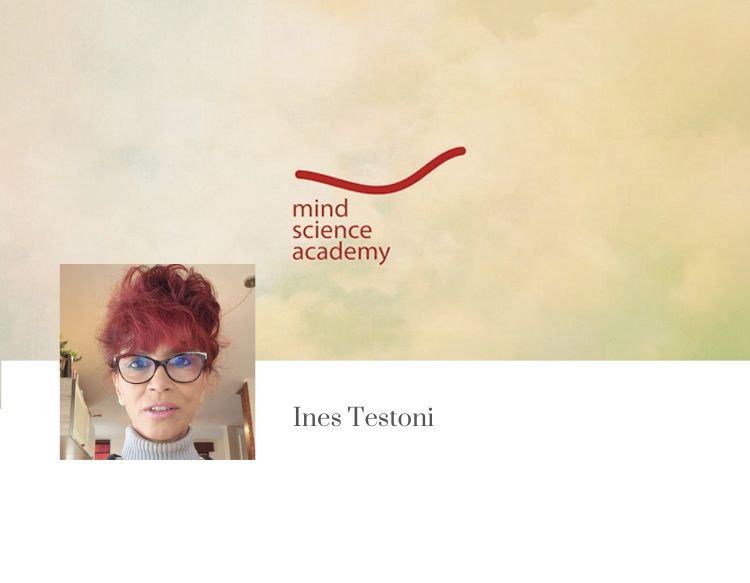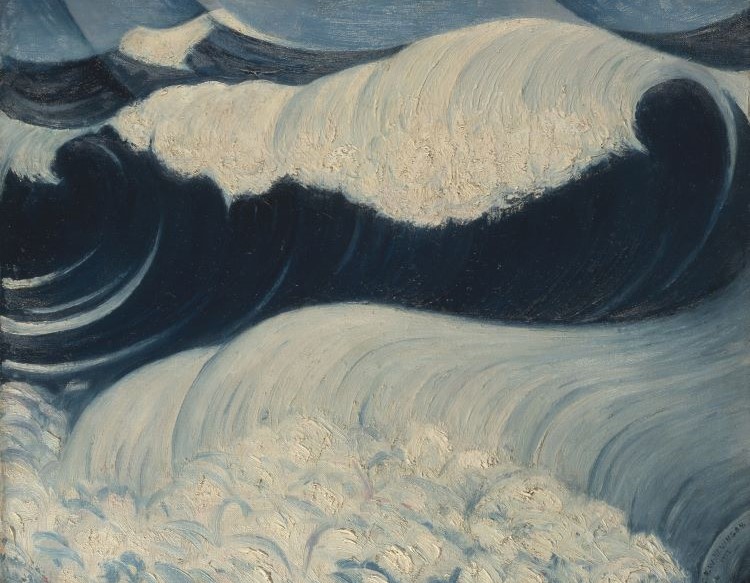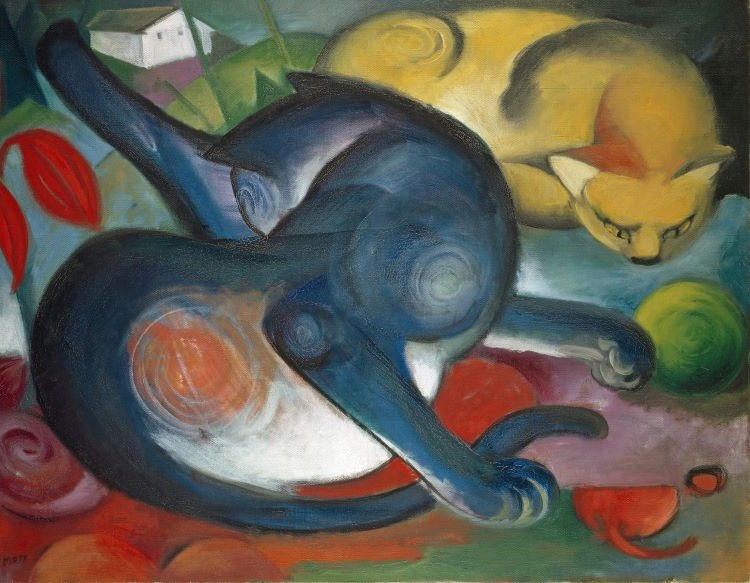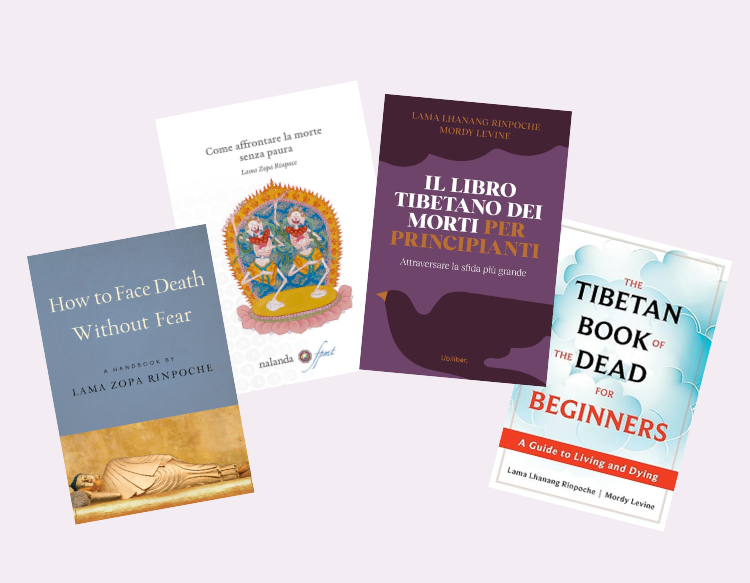by Bruno Neri and Maria Vaghi
The enigma of death is the last remaining taboo in Western society. Faith in God is often replaced by an unconditional trust in science and technology, which at times assumes the characteristics of a new religion, complete with its truths and dogmas. The materialistic worldview is considered capable of encompassing all reality, leaving little room for the transcendent. The resulting anguish over death seems to find its only remedy in repression.
In other cultures, however, death has remained central to life, as it was in our society before the technological era. For instance, in Tibetan tradition, The Tibetan Book of the Dead serves as a timeless guide to life through an understanding of death. Tibetan Buddhism exemplifies an ancient culture that has focused its reflections on the two great mysteries of the universe, which are inseparably intertwined: consciousness and death. The retreat into the realm of repression has stripped death of its dignity.
"There was a time when death itself was young and vigorous, cutting down humankind without scruple; now even death has grown old, pushed aside, a repressed terror relegated to some attic in our memory. By and large, it was swift: one was fully alive one day and beautifully dead the next. There wasn’t much of a gray zone between life and death. Today it nibbles at us bit by bit during our inevitable decline," writes G. Brown in Una vita senza fine? Raffaello Cortina, 2014).
When it emerges from the dark recesses of repression, the anguish of death firmly claims the top spot among existential dilemmas, alongside other unanswered questions such as:
What is the meaning of life?
What is the point of living, working, building, if it all ends in nothingness?
Who am I, where do I come from, and most importantly, where am I going?
What is the purpose of suffering, and why does it exist in the world?
Why does anything exist at all, rather than nothing?
The anguish of death is perhaps the most widespread existential problem, even if not always consciously acknowledged due to repression. Consolatory artifices, sometimes surprisingly naive, such as the famous one proposed by Epicurus in his Letter to Menoeceus, are of little use: "Death, therefore the most dreadful of evils, is nothing to us. For when we exist, death is not present, and when death is present, we do not exist. It is nothing to the living or the dead. To the living, it does not exist; the dead are no longer."
Epicurus's error is glaring: it lies in failing to account for the fact that it is precisely the realization that "the dead are no more" that generates anguish. This awareness stems from the understanding that death marks the end of the uninterrupted thread of consciousness that has illuminated us throughout life. It brings an end to the possibility of experiencing anything further, even the bitter taste of death itself. Repression, therefore, not resolution.
The inevitability of death impacts and conditions various aspects of social organization, demanding both systemic and personal solutions to the problems of illness, suffering, and the fear of death. This fear cannot be diminished, let alone overcome, as long as death remains the ultimate taboo. What is needed is a new education on death (death education).
Ines Testoni (philosopher, psychologist, thanatologist) argues that “One of the greatest challenges we face today regarding death and dying is the lack of a socially shared language and, consequently, the absence of solidaristic practices that form the foundation of community bonds for accompaniment and support during mourning. The performance-oriented society systematically distances us from the suffering of others and makes us forget that finitude characterizes human existence in the world.” In her interview, Testoni highlights the need for widespread death education to become part of the normal cultural and experiential repertoire of communities, emphasizing the importance of contemplative practices to deeply explore one’s inner experience and approach the awareness of one’s own finitude with serenity. As a philosopher, she was deeply influenced by her great teacher, Emanuele Severino, whose approach to the mystery of death focuses on his theory of the “Eternals”, according to which there is no “nothingness” from which something can emerge or into which something can disappear. This concept, far from being easy to fully comprehend, would allow humans to overcome the fear of death, which is merely an illusion, a deception produced by the nihilistic view of becoming.
The emphasis on death education is also highlighted by Lama Yeshe in his contributions, which focus on the experiential aspect rather than the social or institutional one. "Therefore, it is very important to educate people and ourselves about what happens during the process of dying, so that we know what is coming and can understand that it is just a mental projection. In this way, we can die without fear and confusion," the Lama states.
In Tibetan Buddhism, death is viewed as a non-ordinary state of consciousness, a transitional state between the end of one life cycle and the beginning of the next. Adherence to this perspective may occur based on trust in the authority of the Master who teaches it, or through a much more complex—but achievable—experiential path. Central to this path is the practice of specific contemplative exercises aimed at experiencing, during life, the gradual "withdrawal" of the mind from the body that takes place at the moment of death. This experience, the Lama asserts, leads to a state of pure awareness devoid of content, which, far from being terrifying, can be a source of great bliss. It can thus dissolve the inherent fear of death, offering instead a sense of sharing in a higher reality, an infinite space of understanding the true nature of ourselves and all things.
Thanatologist Daniela Muggia also guides us into this realm by discussing tukdam and non-local consciousness: “We can translate the term tukdam as the 'nature of the Victorious One,' that is, of a Buddha. What does it mean?
It refers to absolute, non-local consciousness, independent of the brain, which it may use to interact with the external world as long as the brain functions. This does not imply that it ceases to exist when the brain stops working.”
Tukdam, therefore, describes a state—from which there is no return—where, from a clinical perspective, death has occurred, but the consciousness remains absorbed in meditation and does not leave the body. “Indeed,” Muggia continues, “the unmistakable signs of rigor mortis, algor mortis, or decomposition do not appear.”
Drawing on Tibetan Buddhist and pre-Buddhist Bön traditions, she emphasizes death as an opportunity to consciously re-cognize what we truly are. These traditions view death as the most important moment to prepare for, as it allows for the deepest attunement to one’s own nature, eliminating artificial separations between individual consciousness and absolute consciousness (awareness). Muggia connects these reflections to descriptions of reality emerging from quantum physics, which share striking similarities with these spiritual views. She presents these ideas as part of her teachings on the empathetic accompaniment of individuals at the end of life, a practice she has shared widely in Italy and abroad.
In ourrecommended reading, we propose two books that cater to the needs of different audiences: The Tibetan Book of the Dead for Beginners makes the unique wisdom of this precious text accessible to everyone, while How to Face Death Without Fear by Lama Zopa Rinpoche is more suited for Buddhist practitioners.
Thanks to one of Lama Zopa Rinpoche’s articles, we also have the opportunity to explore the topic of animal euthanasia. The Lama offers advice filled with compassion and humanity for veterinarians who are also Buddhist practitioners.







